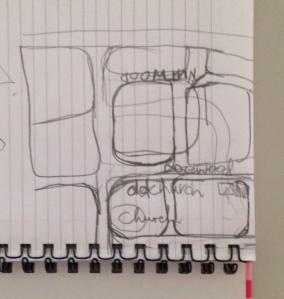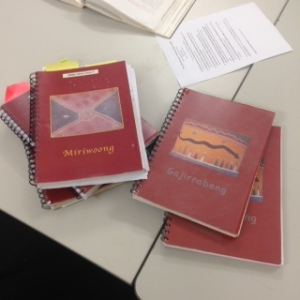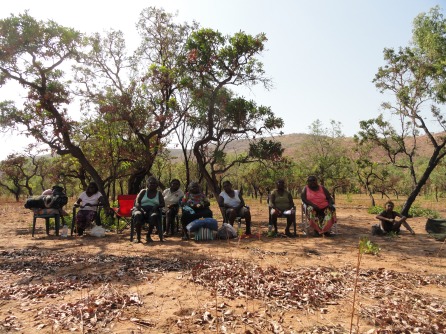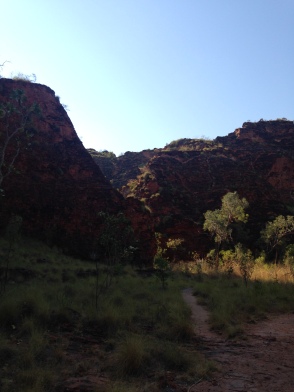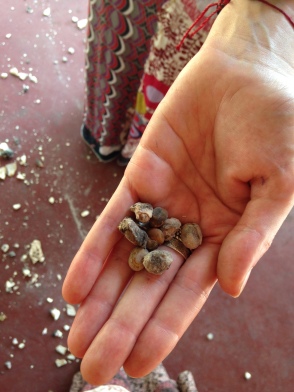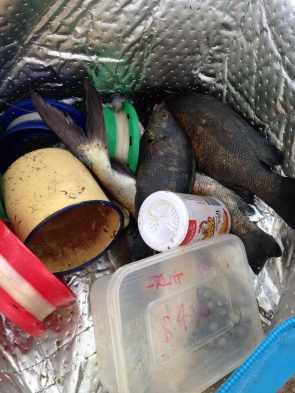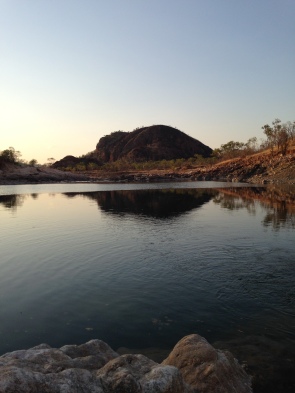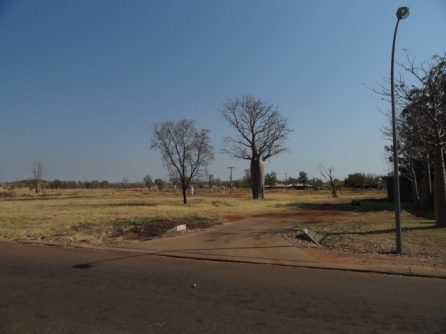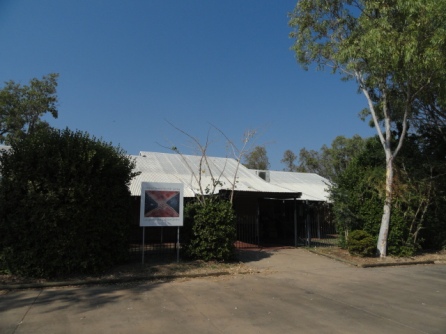# 9, Experience. experiences. experiencing. experiental. experienced (maybe never).
# 8, window into another world – Part 2
# 7, window into another world
Greasing the wheel
More than a few words about our language, the social discourse we get swept up in, and the ripples….
Last week a thirteen year old boy committed suicide in Kununurra. He was a young Aboriginal boy with a family, a long future, a present and a short past. His death rocked the community, and the language centre. Although I did not know this boy, I too was shaken as I grappled with my sense of a natural order, the what and the why? I thought of my thirteen year old sister and the bubbling conversations that I have with her about her horizon. I remember she once turned to me and said “Gret, do you think I can be a tennis pro and a pop singer at the same time.” My response, “Of course you can!”
In trying to understand the circumstances surrounding this tragic event I started reading and as I followed the (digital) paper trail my heart grew heavier.
In a first article I read about the findings of a report into deaths of children and young people in Queensland . Key findings of the report are that child suicide rates have risen since 2009. Suicide is more prevalent for boys, and is the leading cause of unnatural death for the age group 10-14 years. As a cause of unnatural death, the rate of suicide is 5 times higher for Aboriginal and Torres Strait Islander children than their non-Indigenous peers. Clearly the Kununurra case is not an isolated case. Even more concerning is the impact suicide can have within a peer group. One woman working at the language centre described the ‘domino-effect’ of child suicide that had been seen in previous years.
In the report, reasons given for the high suicide rate amongst Aboriginal and Torres Strait Islanders in the Queensland report were multiple and complex. These included the use of alcohol and illicit substances, behavioural problems and previous suicidal thoughts and behaviours. As stand-alone risk factors for a child these issues can be managed, however they are more often than not “further complicated by the ongoing experience of social and economic disadvantage, and a loss of cultural continuity.” (p.73) As I read on, the image of social and economic disadvantage in some Indigenous communities came into focus. Domestic violence and misguided government funding , a 30% increase in reports of child abuse and also out of home-care in the NT, an 18% increase in the rates of incarceration of Aboriginal women over the past two years… It is difficult to tell where the causes begin, and the effects ends. The reality is that these facts and figures represent a web of cumulative risk factors, that is sustained or short-term exposure to singular or multiple sources of adversity, that challenge the personal development of an individuals and by extension families (Wright & Marsten, 2006). Cumulative risk severely compromises the abilities of families and individuals to exercise resilience and break the intergenerational cycle.
Resilience
Human beings are incredibly resilient. They have the ability to overcome any number of challenges set across their path. Men, women, adolescents and children.
So what is resilience?
Resilience can be defined as a positive pattern of adaptation in the face of past or present adversity (Wright & Masten, 2006). In other words one’s capacity to overcome severe challenges and get on with life. It is relevant to make clear at this point that resilience is not a stable characteristic of individuals, it is a dynamic and complex process which one can set in motion by making use of available resources in order to successfully overcome adversity. These resources include personal strengths and support structures within the family, community and also the prevailing attitudes of broader social discourse, which give rise to protective policy and infrastructure. A child who is being bullied at school can plug in to a supportive family network in order to adapt in positive ways to the challenges that they are facing at school. A school ethos which condemns bullying can also be a protective factor in this instance. A child whose home life is unstable can seek stability and support from their network of friends and teachers at school, or other mentors in their community. Equally, a child who has witnessed domestic violence, or been a victim themselves, with the appropriate support, has the capacity to adapt in positive ways to overcome these experiences.
In terms of the process of resilience, the difference between adults and children is that adults have some agency in choosing the environment they place themselves in, the voices they listen to, the advice they take, and that which they reject. Thus adults have control over the protective resources they have access to. Children do not have this same agency, and in this sense they are vulnerable, as is their capacity to exercise resilience.
I am in no position to render the facts and figures coherent of social and economic disadvantage in some Indigenous communities across Australia, nor am I qualified to propose strategies to deal with the impacts of cumulative risk for communities, families and children. For what it’s worth, I think the best approach to dealing with intergenerational trauma is to build resilience within the family unit, while also addressing the problems that face some Indigenous communities. Australian entrepreneur and philanthropist Andrew Forrest and a team of experts have recently released a review of and recommendations for Indigenous economic and social policy, which promises to build this capacity for resilience, in addition to addressing current issues such as unemployment. The report clearly resonates with some communities as it has received positive feedback from Indigenous groups across Australia . An even more constructive development in this regard is the work being done through the Federal Government’s ‘Empowered Communities’ project, which is a channel through which Indigenous leaders and communities can provide their own answers to questions surrounding the present and future of their communities. What I do want to talk about is another risk factor threatening Indigenous Australians and Indigenous children, which has recently been drawn to national attention in a brilliant ad campaign. Racism.
Racism in the backyard
There is no doubt that racism towards Aboriginal Australians is pervasive in Australia today. The negative press tramping along a dominant “suggested articles” trail in the Australian media plays no small role in shaping sweeping generalisations about Australian Aboriginal groups, and obscuring all the positive developments that are also taking place in many if not all Indigenous communities across Australia. The Aboriginal people I meet in Kununurra, the friends I am making, are proof of the positive, and some whitefellas I have come across in Kununurra are in the back yard sweeping. Gated communities, passing comments, sneering remarks about Kimberley Kriol, to the tune of “if I were to learn a language it would NOT be Kriol.” For the record, Kriol, which is a language spoken by many Aboriginal people living in Kununurra is not a bastardised form of English, as English is not a bastardised form of Latin. Kriol is a language in its own right, with system and structure to express humour, creativity, tenderness, anger and all else that is part of meaningful human communication. And how could I forget the calculating stare of the man working behind the counter at “Thirsty Camel” slowly counting out the change for the Aboriginal man buying a six-pack of VB, or the police cruising the streets looking for trouble. No guessing who they are looking out for.
Don’t just take my word for it. A recent survey conducted by BeyondBlue , which was completed by over 1000 non-Indigenous Australians, provides evidence to suggest that racist attitudes towards Indigenous Australians are still prevalent in Australia. If you believe that Aboriginal Australians are “sometimes a bit lazy” and receive an unfair advantage in support from the Australian government, then you are not alone. The major challenge in dealing with racist attitudes and the discriminatory behaviour they give rise to is captured by chief executive of Beyond Blue, Georgie Harman, has said that people may not realize that they are discriminating, and they do not understand the negative impacts it can have on the mental health of Indigenous Australians. Overt prejudice giving rise to discrimination, such as race-related verbal abuse can be nipped in the bud because we can see it, and we can speak out about it. Covert prejudice, of the variety that Harman is referring to, be it counting the change or worse still standing by to watch a Yolngu man drown, may be invisible even to the perpetrator of this prejudice. Was just making sure I have got the right change, or didn’t want to put myself in danger. Regardless of whether it is visible or not, discrimination scores a deep wound.
It may seem that there is a vicious cycle turning in some Indigenous communities in Australia, but deeply entrenched negative or condescending attitudes towards Aboriginal Australians at both an interpersonal and an institutional level are the grease that oils this wheel of intergenerational trauma. The average Australian may not be able to work directly to reduce the rate of Indigenous incarceration, alcohol abuse and domestic violence. What they can do is check their opinions, dig deep to uncover covert prejudice, and check the language they use to talk about or talk to the Aboriginal brothers and sisters.
How racism affects mental health
As I understand it, the effects of overt racism and more covert prejudices make their way into the personal psyche through the channels of personal narrative and the imagination.
Personal narrative is a concept which has been taken up by researchers in psychology and related fields such as applied linguistics and education, because of the evidence it provides of identity work. As Benson et al (2013) put it, “the coherence of our identities lies in the stories of our past, present and future, that we tell to ourselves and to others” (p. 25). The narratives we weave are attempts to make sense of the multiple, pluricultural identities we may acquire by virtue of living in a modern, globalized world. Noel Pearson (2014) has pointed out that for Aboriginal Australians, a bicultural identity is not a choice, but a fact of existence in a country in which Western society has superimposed itself over traditional ways of thinking and being in the world.
To tell our stories, we draw on the categories made salient to us by our historical and sociocultural context, media representations and immediate experience (Markus & Nurius, 1986). Through these stories we express who we are now, and who we hope to be in the future. I am talking about how I want to be a linguist learning about Aboriginal languages and world view right now, and how maybe in the future I will become a teacher. I am making use of the opportunities available to me – education, internships, advice. I am absorbing public opinion on language and education through the media. I am listening to what people have to say about my hopes and dreams and present actions. It’s all part of my story. It is easy to imagine how negative and racist discourse directed at you could make their way into your personal narratives.
Imagine being a native Kriol speaking kid in primary school, whose teacher makes a point of ‘correcting’ you every time you speak up in class, rather than recognising that Standard Australian English (SAE) is your second language, and one that you may need to be taught explicitly. In those shoes I wouldn’t be keen on school. Or what about an Aboriginal man in the pub overhearing a group at the next table laughing at an Abo joke? Real funny. These experiences and the vocabulary that comes with them are the narrative resources that are being packed onto the shelf for all generations of Aboriginal and Torres Strait Islander people. Hotel Kununurra was a segregated pubs until about 10 years ago, but I reckon there is still segregation in bookstores across Australia. It is unacceptable, and I hope to see things change in my lifetime.
A construct which is related to personal narrative is the self concept – who we know ourselves to be, based on actual and perceived capabilities, informed by the imagination. The self concept is not necessarily something we share with the world, and the aspects that we do share are projected in the things that we do and say. It is fair to say that the self concept is a powerful motivating force, which derives much of its power from the imagination. Consider the following quote:
“Throughout history of mankind, humans are driven by their imagination and their ability to see images of the desired future. Leaders, poets, writers, composers, artists, dreamers, athletes have been able to be inspired, stay inspired and inspire others through such images. These images, once shared, have the power to become a force, and in that sense an inspiration for social development and growth, for intentional change at many levels of social organization, not just for the individual.” (Boyatzis & Akrivou, 2006: 633)
We imagine what we have experienced in the world, and in this sense the imagination is the tool that mediates our self and reality. It is the tool we use to paint a vivid picture of ourselves in the present moment and project future ideal selves. Our ideal self is that self we hope to become. The gap between our present and our ideal self, in turn has the power to motivate us in the present moment to bridge this gap. When the future you imagine is peppered with negative encounters you have in your present that result in low feelings of self-worth, even the feeling of being invisible, one can see how devastating the effects might be. When the future self you imagine is obliterated by these negative encounters, what then?
Personal Interventions
It has been suggested that factors which contribute to the resilience of those who face discrimination and oppression are a strong cultural identity and comfort and competence relating to non-group members (Wright & Masten, 2006). For Aboriginal people, comfort and confidence can only come from positive encounters with whitefellas. Cultural identity can be bolstered by the sense that those from different cultures are opening to understanding, and have respect for your culture. It’s not complicated stuff. A happy encounter may be the first line in a page-turner. You just never know.
Institutionalised racism
Moving from the personal to the institutionalized racism which shapes Australian politics, and again feeds into the internalised orientations that we may have towards Indigenous Australians, I want to bring up Noel Pearson’s views on the question of what it means to be an Aboriginal Australian today, and the types of influences that shape this concept.
“Indigenous policies to date have been premised upon exclusive and hierarchical conceptions of “race”. They proceed from historical assumptions of indigenous inferiority and incapability. These assumptions convinced governments that Indigenous Australians are incapable, and too often, they have convinced our own people” (Pearson, 2014:48)
Not only do Indigenous people face discrimination in the streets of their home towns, government policies pertaining specifically to their social and political existence, informed as they are by race-based notions of inferiority and incapability, are inherently discriminatory. These policies have also made their way into the self concept and the personal narratives of Indigenous people. Pearson talks about the way that government interventions in Indigenous affairs have denied Indigenous people the right to choose how they will exist in the modern world, and how they will adapt to Western ideals and values while protecting their language and culture. I would argue that Indigenous people are also denied this existential choice, through discrimination in the media and through personal encounters, which reduces the social capital – the identity building resources – that Aboriginal people have access to.
Returning to the what and why of child suicide in Indigenous communities, I am a little closer to understanding the heavy burden that some of these children bear – challenging their capacity for resilience, their personal narratives and their hopes for the future. If you have stayed with me all the way, then perhaps you are beginning to understand it too. Or maybe you already knew?
Pearson has reminded us that there only one race, humankind. Many cultures, one race. Institutional recognition is one thing. However recognition of this at an interpersonal level, for both non-indigenous and Indigenous Australians will be the true vehicle for positive change, and the telling of good old yarns in our Australian future.
Readers seeking support and information about suicide prevention can contact Lifeline on 13 11 14 or Multicultural Mental Health Australia or the Local Aboriginal Medical Service
Benson, P., Barkhuizen, G., Bodycott, P., & Brown, J. (2013). Second Language Identity in Narratives of Study Abroad (P. Benson, G. Barkhuizen, P. Bodycott & J. Brown Eds.): Palgrave Macmillan.
Boyatzis, R. E., & Akrivou, K. (2006). The ideal self as the driver of intentional change. Journal of Management Development, 25(7), 624-642.
Markus, H. R., & Nurius, P. (1986). Possible selves. American Psychologist, 41 (954-969).
Pearson, N. (2014). A Rightful Place: Race, Recognition and a more complete commonwealth. In C. Feik (Ed.), Quarterly Essay: Black Inc.
Wright, M. O. D., & Masten, A. S. (2006). Resilience processes in development: fostering positive adaptation in the context of adversity. In S. Golstein & R. B. Brooks (Eds.), Handbook of Resilience in Children. New York: Springer.
